
Searching for the remnants of Edo’s oldtown legend, Hokusai.(Part 2)
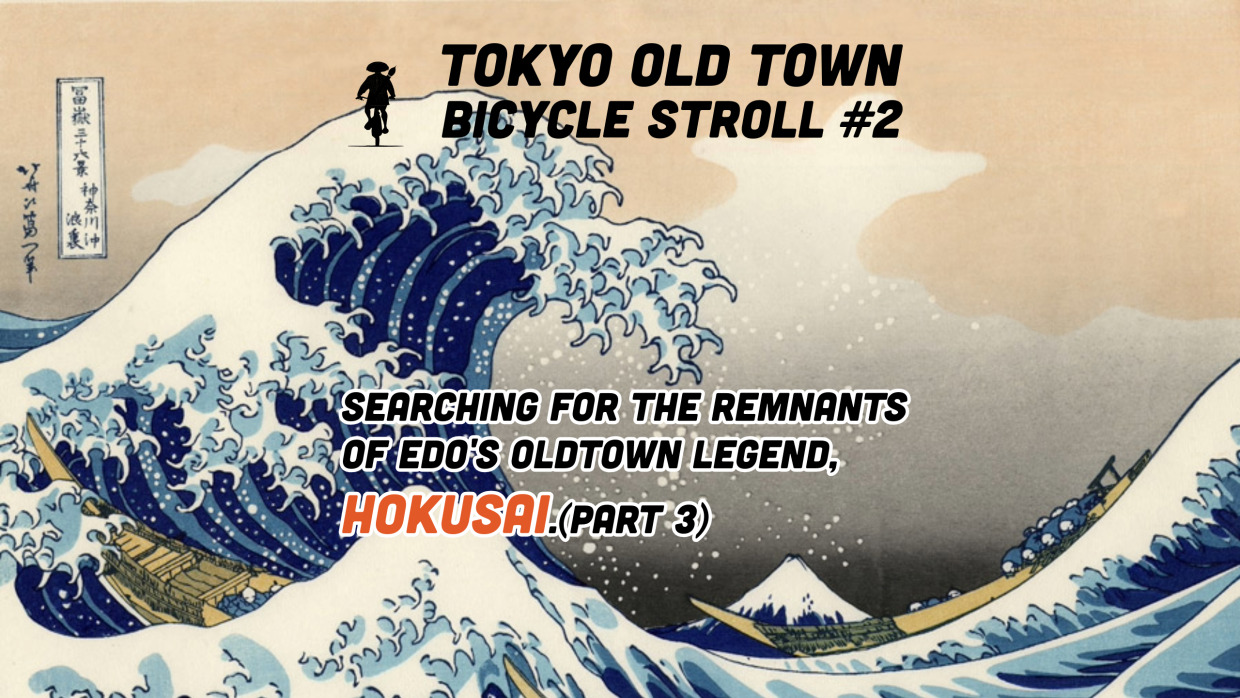
In the final installment of the Hokusai bicycle stroll, I trace the peak of Hokusai’s life and career. From manga and art performances to the “Thirty-Six Views of Mount Fuji” and fascination with Mount Fuji, I’ll explore the areas from Honjo to Asakusa, searching for traces of his legacy.
1. The Day “Manga” Was Born (50s)
2. The Eccentric Man (60s)
3. The Great Wave (70s)
4. The Man Who Traveled with picture (80s)
5. The buried Giant (90s)
The manga artist Akira Toriyama, known for creating “Dragon Ball” and “Dr. Slump,” passed away in 2024, and his death was mourned worldwide. “Manga” has become a global term for Japanese comics, but do you know who coined this word?
At 55, Hokusai published a series of sketchbooks called “Hokusai Manga” (known overseas as “Hokusai Sketches”), which became an unexpected hit. When asked by the publisher what the title should be, Hokusai said, “Since these are sketches drawn freely, ‘manga’ would be good.” This is said to be the first time the word “manga” was coined, making Hokusai essentially the godfather of manga.
The 19th-century French writer Edmond de Goncourt, who wrote a biography of Hokusai, described “Hokusai Manga” as “magical snapshots.”
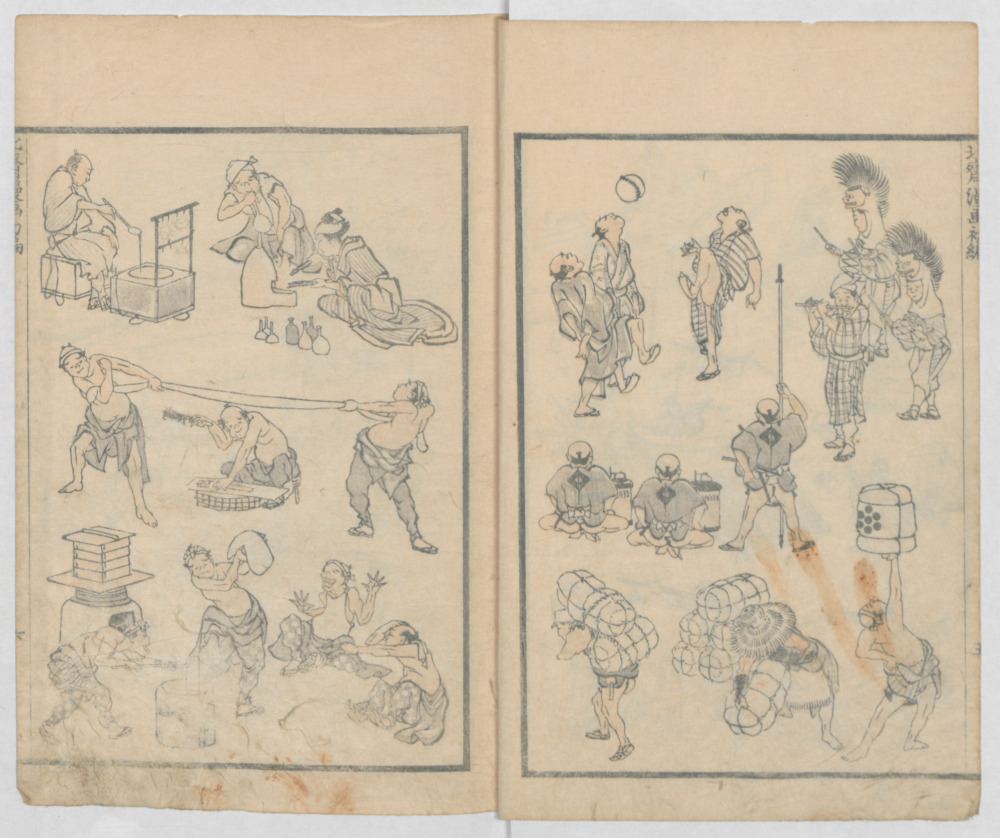
Performer Hokusai
Hokusai was also known for his modern art-like performances, creating artworks in public. During his stay in Nagoya, he drew a painting approximately 120 Tatami-sized ( 186 square meters in size ) at the Hongan-ji Nagoya Betsuin. People watching from the ground couldn’t discern what was being depicted, but from a high vantage point, it was revealed to be an image of Daruma. This performance further spread Hokusai’s fame throughout the Kansai region.
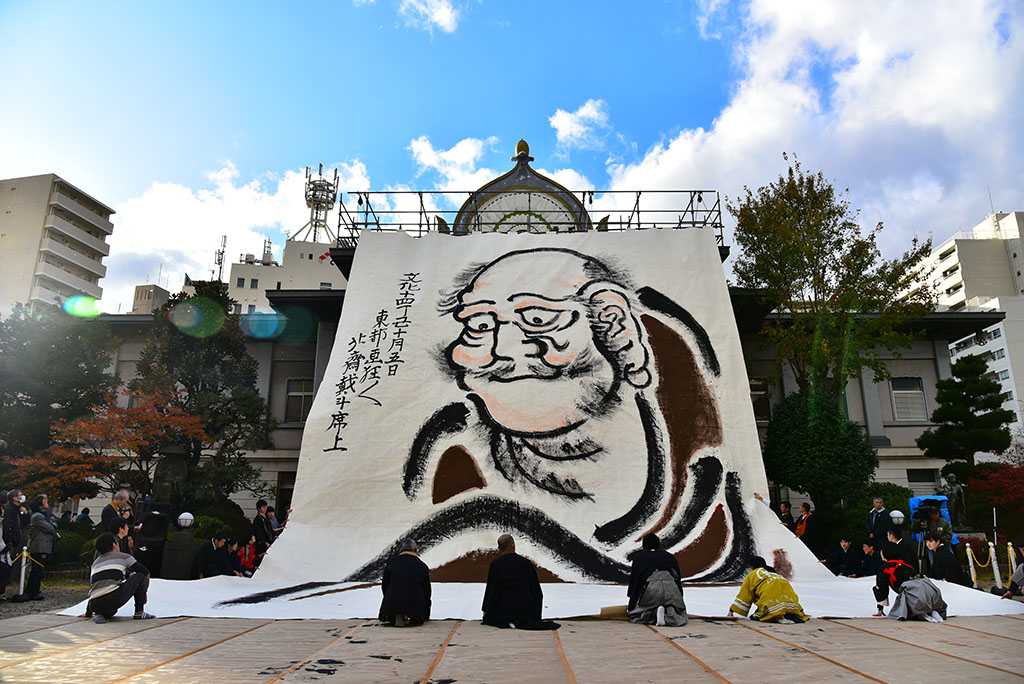
In his sixties, Hokusai’s popularity became firmly established, and it is said that he had over 100 disciples. In this chapter, let’s take a look at the life Hokusai was leading during this time.
Poverty
As seen in the Senryu ( A form of haiku ):
“A failed Edokko saves money.”
In Edo, it was common for Edokko (those born and raised in Edo) not to have money, and in fact, it was considered uncool to save money, as reflected in this haiku. During that time, Edo was a town where wooden buildings were prevalent, leading to frequent fires, and there was no banking system to deposit money, so the concept of saving money naturally became less prevalent.
Hokusai, who was indifferent to money, lived his whole life in poverty, as befitting an Edokko, but it seems he didn’t particularly feel the pinch.
By the way, I also prides himself on not feeling ashamed to claim the title of Edokko for this reason alone! (haha)
Moving Addict
Hokusai moved a whopping 93 times in his lifetime! There are even stories of him moving three times in a single day at the worst of times. Mostly, it seems he moved within a small area of what is now Sumida Ward. Throughout his life, he lived in what would now be considered studio apartments, called nagaya at the time. The cycle was simple: when the trash piled up, it was time to move to a new place.
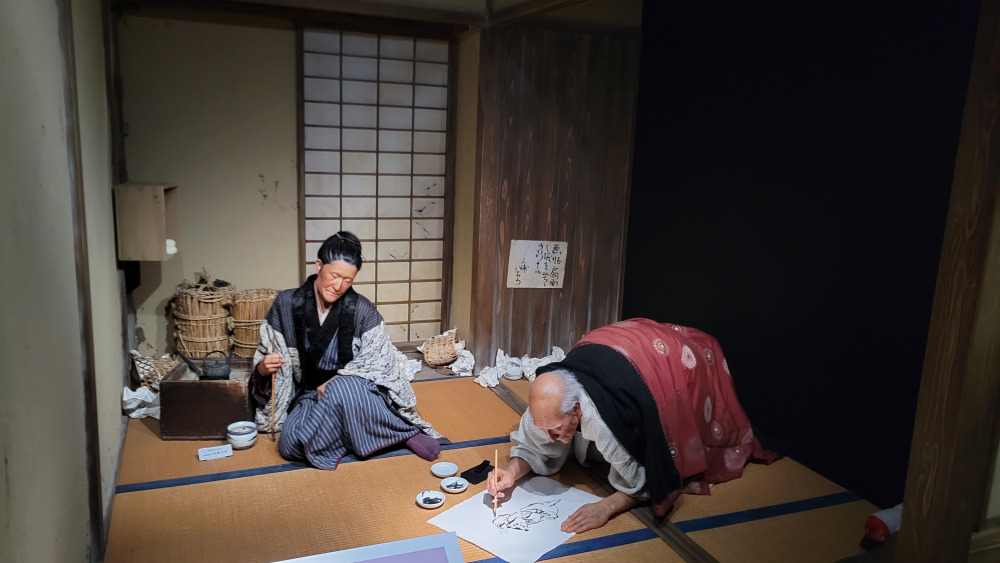
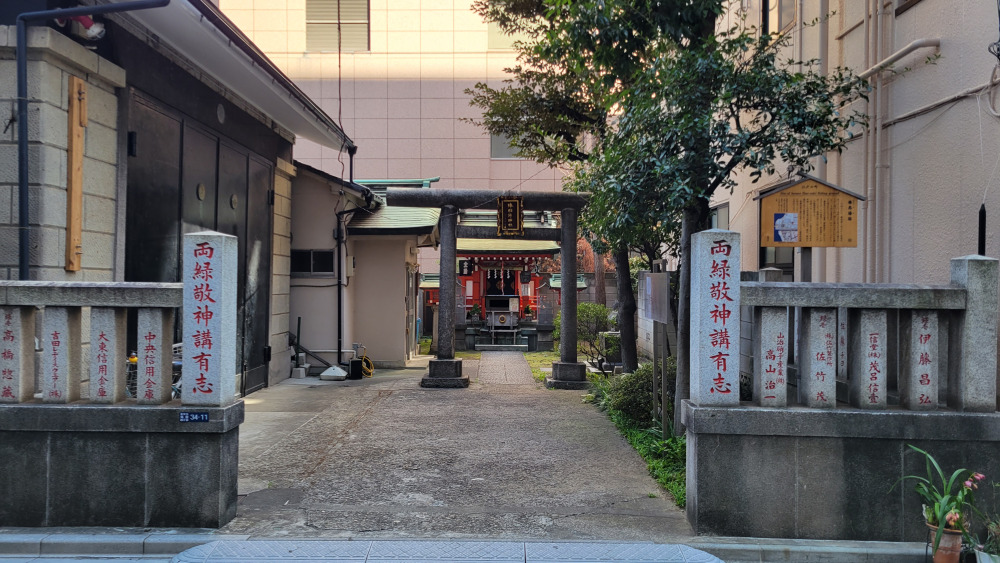
Daily Routine
It’s said that he would wake up before sunrise, pick up his brush without having any meal, and continue painting tirelessly until nightfall. Only when his eyes and arms grew tired at night would he finally set aside his brush, eat two bowls of soba noodles, and then go to sleep. This routine was quite unusual for an Edokko at the time, as he showed little interest in alcohol or tobacco, and aside from sweets, he didn’t seem to have much interest in food either.
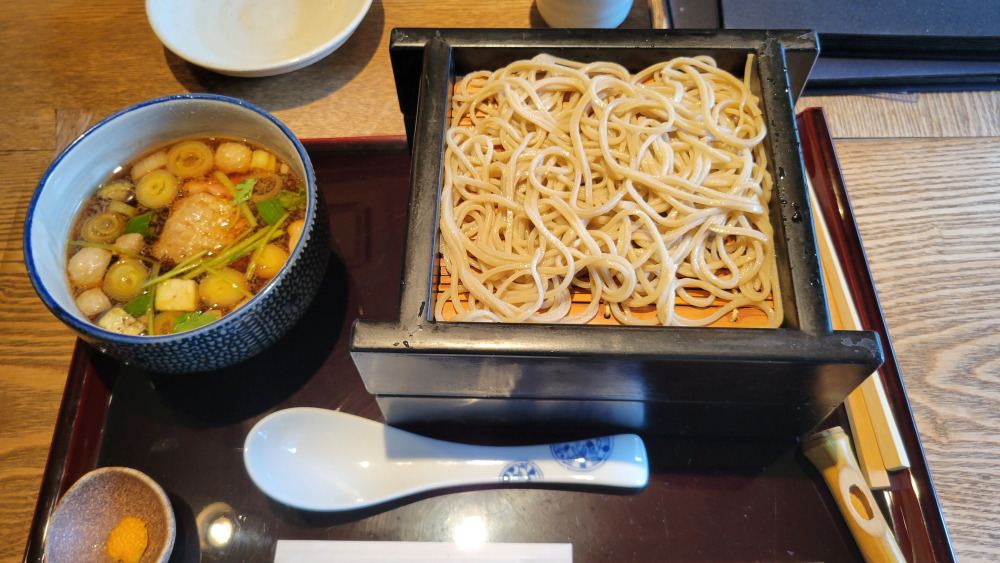
In modern times, people retire from their careers and embark on their second lives, but for Hokusai, his life as an artist was just reaching its peak.
At the age of 72, he released a series titled “Thirty-Six Views of Mount Fuji,” focusing on Japan’s highest peak, Mount Fuji. This work recently made headlines when it was auctioned in New York, fetching a staggering $3.55 million (approximately ¥530 million) for the entire set.
Among these prints is “The Great Wave off Kanagawa,” known worldwide as a masterpiece.
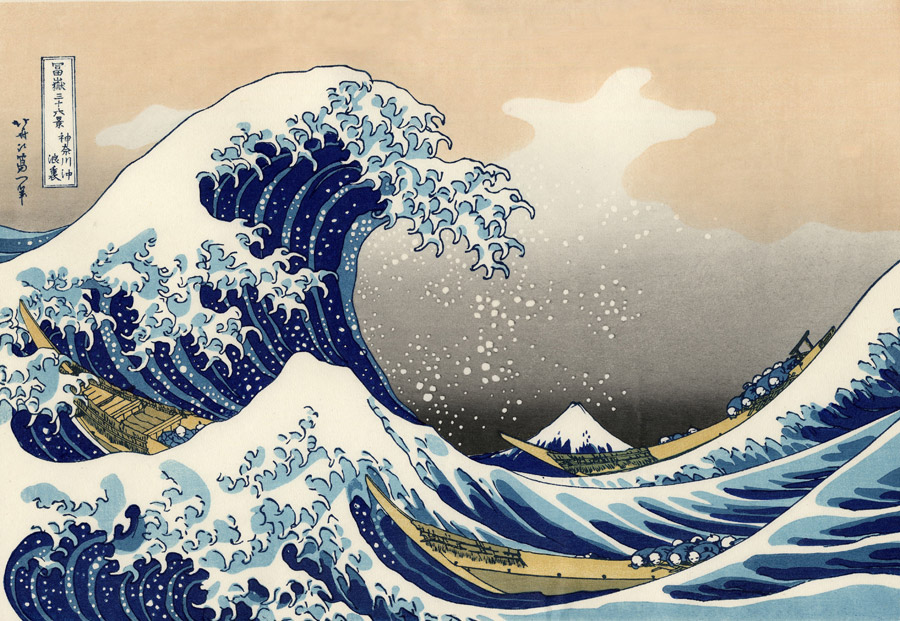
At that time, Mount Fuji worship was deeply ingrained in the populace, with mounds resembling Mount Fuji being enshrined in various places. It’s said that even those who couldn’t visit the real Mount Fuji in their lifetime would make pilgrimages to these substitute mounds, revealing the humble lives of the common people.
This collection of paintings depicting the revered Mount Fuji from various locations might have stirred people’s desire to travel, if only in spirit.
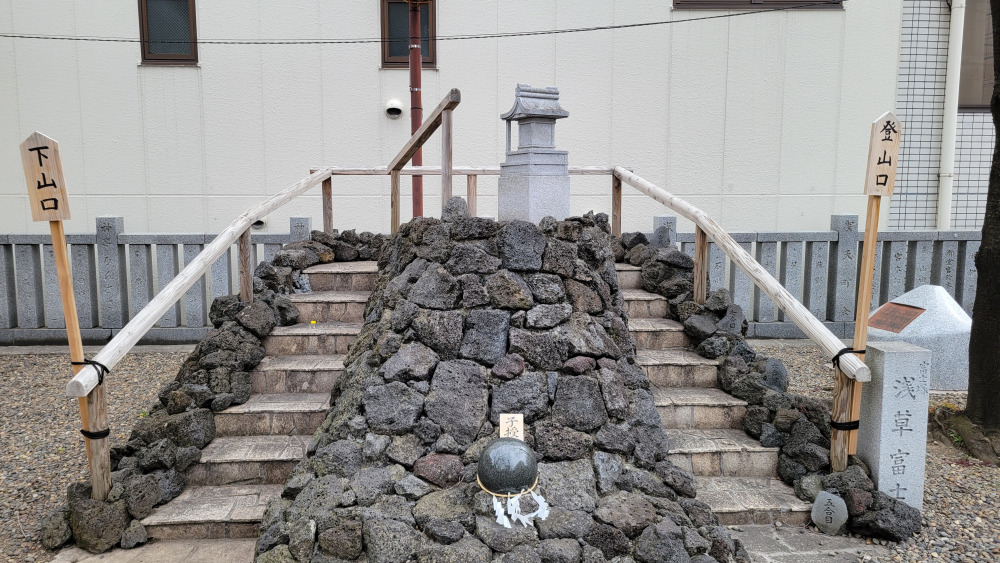
During this time, there were occurrences of great famine and tightening control by the shogunate, making the publishing industry’s circumstances increasingly harsh. Hokusai began incorporating new techniques, producing many unique hand-painted works known as “nikuhitsu-ga.” Amidst this, Hokusai met a prominent figure from Shinshu (present-day Nagano Prefecture) and was invited to visit Obuse. Despite the direct distance from Edo to Obuse being over 220km, Hokusai visited Obuse three times, suggesting a strong affinity for the place and its people. Accompanied by his daughter Oei, he left behind numerous hand-painted works during his stays.
Hokusai was known for his love of travel, having visited various places such as Nagoya, Uraga, and Chiba, using them as subjects for his art. If bicycles had been available during this era, he would surely have ridden around with his paintbrushes in tow.

At the age of 90, Hokusai finally fell ill at the Nagaya of Hensyo-in Temple in Asakusa. His last words to his daughter Oei and his disciples were, “If only I could have another 10 years… or even just 5, then I could truly become a great artist.” His remains were buried at the Seikyo-ji Temple in Asakusa.

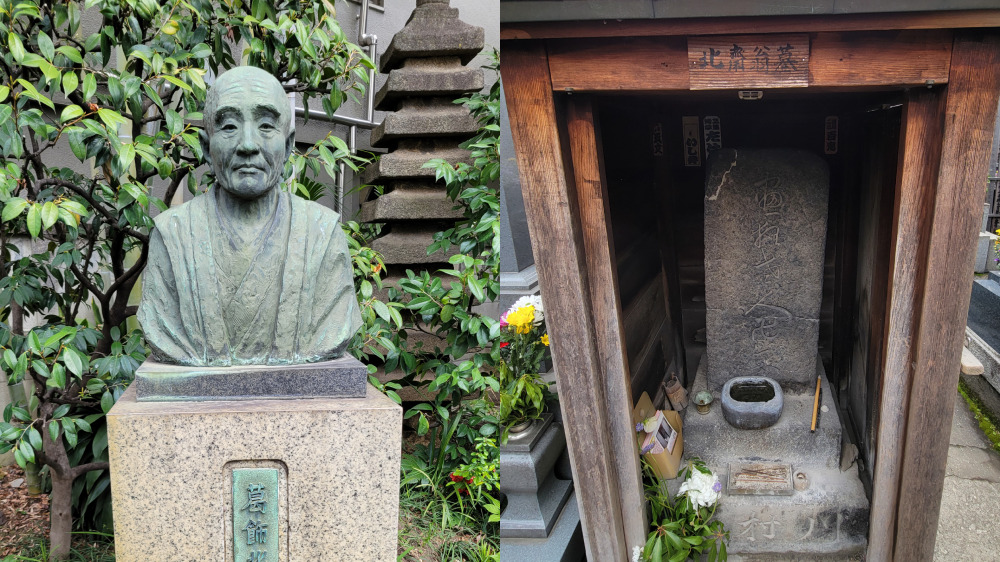
Four years after Hokusai’s death, Admiral Perry’s fleet from America arrived in Uraga. Eventually, the Tokugawa shogunate fell, giving birth to the modernized Meiji government in Japan.
In this era of rapid change, traditional Japanese art, especially the works of town painters, were no longer valued, and Hokusai’s name began to fade into obscurity. Forty-four years after his death, when the writer Kyoshin Iijima compiled Hokusai’s biography, there were hardly any disciples or acquaintances left from that time.
Meanwhile, unbeknownst to many Japanese, ukiyo-e, which had been considered of low value in modern Japan, began to spread overseas. Particularly, Hokusai’s free brushwork had a profound impact on the conservative French art world where painters like Claude Monet and Vincent van Gogh resided, sparking the movement known as Japonism.
Throughout his life, Hokusai changed his artistic name more than 30 times. His final pseudonym was “Gakyō Rōjin Manji,” meaning “The Old Man Mad About Art (Manji symbolizes good luck in Buddhism).” Rather than dedicating his life solely to painting, Hokusai seemed to maintain a childlike curiosity and pure enjoyment for drawing. Always curious about various things regardless of age, he might resemble you, the reader, in some ways.
Traces of Hokusai’s life are scattered throughout the neighborhoods of Sumida Ward in Tokyo. Why not take a leisurely bicycle ride and explore them for yourself?
🚲Today’s Course (Part 1 to Part 3 included)
Reference Site:
Sumida Hokusai Museum : https://hokusai-museum.jp/?lang=en
The Metropolitan Museum of Art : https://www.metmuseum.org/
Hongan-ji Nagoya Betsuin : https://tokai-hongwanji.net/
🚴♂️Hokusai bicycle stroll🚴♂️
#01 Birth to Teens
#02 20s to 40s
#03 50s and Beyond
Profile
Shitamachi Kombu
Weekend writer. Born in Kanda, Tokyo, and the third generation “Edokko” (Tokyoite). Interested in rediscovering the shitamachi (oldtown) area. Relies on an electric bicycle daily as a commuting companion. Suffers from a poor sense of direction. A fan of essayist Sadao Shouji. Writing under the pen name “Shitamachi Kombu,” inspired by the classic snack “Miyako (downtown) Kombu.”
Post Date:2024.06.12